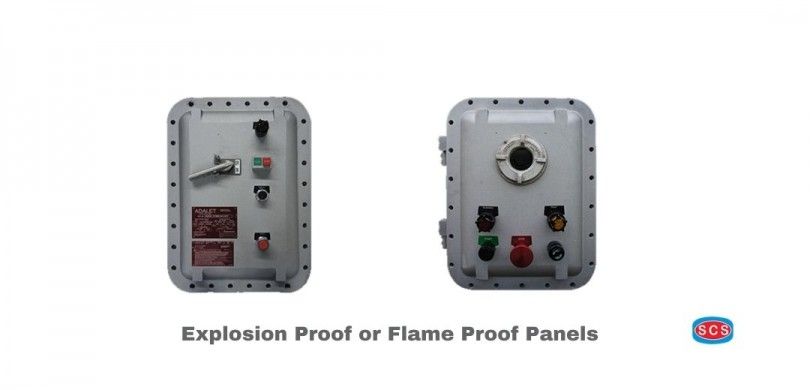To minimize the potential damage & hazards to workers that may escalate in a blink, using Explosion Proof Panels for safety and maintenance is critical. Know more, why?
Employees' safety is threatened when there is a risk of explosion and fire in industrial workplaces and scenarios. Certain hazardous locations have a concentration of flammable gases and dust, which makes them inherently dangerous and prone to the fire hazard. While any industrial environment may be exposed to hazardous substances, they may be even more common in water purification plants, oil refineries, and gas refineries, among other industries.
Fortunately, industries have access to the different kinds of electrical enclosures and panels that can resist the fire hazard even in the face of environments that contain flammable substances.
The distribution and electrical panels, including explosion-proof panels and purged/pressurized panels, help industries sustain their operations while ensuring workers' safety. The inclusion of these panels reduces the probability of a fire hazard and accidents significantly. The explosion proof panels are used widely across industries and in different parts of the world. They come with the UL (Underwriters Laboratory) rating and NEMA certifications to ensure that they can be used with complete peace of mind in the explosive industrial environments.
Explosion Proof Panels
An explosion-proof panel can be defined as an electrical enclosure that can withstand an internal explosion without rupture. A hazardous location panel explosion-proof should also prevent any ignition/explosion/flame (occurring in its interiors) to spread to the outside environment and cause an explosion there.
The NEMA Rating and the Purged Systems
The National Electrical Manufacturer Association (NEMA) provides a rating to enclosures for their specific and particular environments. It is recommended that a NEMA rated enclosure, like 4 or 4X, should be accompanied by the appropriate purge system to provide the best resilience to any internal explosion and for best safety.
Features for Complete Safety
A purge/pressurization system will prevent the occurrence of ignition and, therefore, fire, while the built of the enclosure will provide it added strength to resist rupturing. These systems maintain a positive pressure of an inert air inside the enclosure. The flammable particles from the outside air cannot enter the insides of an electrical enclosure. The enclosures do have a seal provided through the integration of a gasket within the enclosure's built. An air control system constantly monitors and maintains the requisite air pressure inside the enclosure.
Further, some air exchanges may also be required for ensuring that any hazardous gas cannot penetrate the enclosures after the seal is in place. The use of a compressor ensures that only “instrument quality” air reaches to the enclosure. The potential of the presence of any flammable particle in the insides of the enclosure is reduced. Interlocking provides for clean air in the interiors of the enclosure. The clean air will also be cycled to a unit's inner side so that explosive gases are completely removed before the system is started.
For ignition and explosion to occur, elements including oxygen, spark, and a flammable substance should be there. The best explosion-proof enclosures reduce one or many elements necessary for explosion and fire and provide safe industrial processes and environments. A leading manufacturer can provide reliable, and NEMA/UL rated electrical enclosures that are explosion-proof and can be used in hazardous environments with complete peace of mind.

